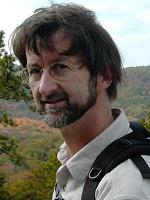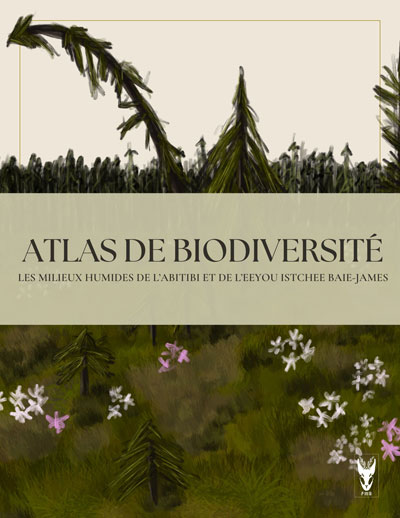
Michael Papaik
Ancien Professionnel de recherche
Programmation, modélisation et bio-informatique
Université du Québec à Montréal
C.P. 8888, Succ. Centre-Ville
Montréal, QC, Canada, H3C 3P8
(707) 829-3771
2-11 novembre : (514) 987-3000 poste 2357
Accueil - Formation Académique - Présentation - Formations offertes - Mes champs de spécialisation - Recherches - Publications - Logiciels
Formation Académique
- Visiting scientist 2008 Cary Institute of Ecosystem Studies, Millbrook, NY, USA. Fundamental versus realized niches of forest trees: spatially-explicit analyses of the effects of climate on adult growth and mortality in northeastern tree species.
- Postdoctorat sur modélisation des écosystèmes de forêt 2005-2008 (Christian Messier, Université du Québec à Montréal, Montréal, Québec, Canada). Creating and implementing decision-support tools as part of sustainable forest planning: a multiple scale and perspective approach (site Web de projet)
 Special Issue Ecology and Society
Special Issue Ecology and Society
- Ph.D. en Écologie forestière, 2005 University of Massachusetts, Amherst, MA, USA. Synergies of the disturbance regime and tree competition in temperate forests of northeastern North America.
- M.Sc. Études de l'environnement, 1999 Bard college, New York, USA. Ecosystem effects of a wind dominated disturbance regime in transition oak-northern hardwood forests.
- A.B. Mathématiques, 1987 University of California Berkeley, Berkeley, CA, USA
Présentation
J'habite actuellement en californie, mais je suis disponible par téléphone ou courriel si vous avez des questions au sujet de la modélisation de la dynamique des écosystèmes peu importe où vous êtes rendus dans vos projets de recherche (design, analyses ou interprétation). Mon adresse courriel demeure le meilleur moyen de me contacter afin d'obtenir de l'aide ou pour fixer un rendez-vous par telephone. Afin de vous fournir le meilleur service possible, veuillez inclure le sujet de votre requête dans le corps de votre message (i.e., l'organisme, le genre d'analyses que vous désirez effectuer, votre dispositif expérimental).
Bien que j'habite en Californie, je voyage à Montréal deux ou trois fois par an pour des réunions ou pour donner des cours. Ma prochaine visite programmée aura lieu en octobre 2008. Veuillez me contacter si vous voudriez prévoir une réunion.
Formations offertes
J'offre à l'occasion des formations aux membres du CEF sur (Contactez-moi pour plus de détails):
- Likelihood Methods in Ecology (plus de détails)
- Simulation modeling in Ecology (plus de détails)
- Individual-based models in Ecology
Mes champs de spécialisation
sont les modeles spatially-explicit. Cette grande famille incluant les régressions multiples linéaires et non-linéaires associées à différentes distributions, telles que régressions de Poisson (modèles log-linéaires), logistique, gamma et binomiale négative. Je peux aussi vous assister dans les analyses des modèles utilisant maximum likelihood analysis, la theorie informatique (AIC, BIC, etc.) et les techniques d'inférence multi-modèles (multimodel inference, model averaging par exemple).
Ayant effectué mes recherches sur la compétition parmi les arbres, je possède les compétences nécessaires pour vous aider avec les analyses de croissance des arbres, les analyses incorporant les probabilités de détection, telles que les analyses de survie, les modèles de dispersion et survie (establishment) des graines, les modèles multi-états (multi-state models), et les modèles de mass balance.
Je connais également certaines techniques de d’inférences statistiques telles que le bootstrap, le jacknife et les simulations de Monte Carlo, et aussi certaines techniques multivariées, telles que les PCA, analyses de groupement, ou certaines analyses de correspondance (detrended correspondance analysis (DCA), canonical correspondance analysis (CCA), non-metric multidimensional scaling (NMS)). Bien que ce ne soit pas ma spécialité, je peux également offrir de l'aide pour certaines analyses statistiques telles que les ANOVA's, analyses de covariance, etc.
Recherches
Mes intérêts de recherches en écologie sont:
- L'écologie des communautés et des écosystèmes forestiers et
- Les principes fondamentaux de l'inférence scientifique.
En écologie forestière, je développe et emploie spatial-explicite, voisinage-échelle des modèles comme approche qui peut intégrer la dynamique écologique à l’échelle de l’individu, de la population, de la communauté, de l'écosystème et du paysage. La théorie de voisinage de forêt reconnaît que les arbres de verrière exercent des effets forts et locaux sur des processus d'écosystème qui est convenablement regardée comme voisinage dans lequel les mélanges de différentes espèces agissent l'un sur l'autre synergiquement. Ces processus de voisinage ne sont pas aisément incorporés dans les modèles traditionnels de l'écologie des communautés ou des écosystèmes. Le coeur de mes intérêts de recherches suivent ces approches et se divisent en trois catégories générales:
- Écologie des forêts tempérées et boréales (comprenant la compétition entre les arbres et les effets des changements climatiques)
- Écologie des perturbations (abiotiques et biotiques)
- Applications à la gestion durable des forêts
Ma recherche inclut le développement et l'application de SORTIE-ND, un modèle spatial-explicite de dynamique des forêts ; analyse d'écosystème multi-modèle et multi-échelle ; les impacts potentiels du climat sur les écosystèmes forestiers ; tringleries (linkages) entre les caractéristiques de ligne de partage et les propriétés des écosystème lacustres ; les méthodes d'évaluation de maximum de vraisemblance, et les modèles mathématiques.
En écologie des perturbations, ceci inclut les conséquences de la maladie de l'écorce du hêtre dans les forêts caducifoliées ; les effets du vent non-catastrophique sur la dynamique des forêts caducifoliées ; et la modélisation de la dynamique de la tordeuse des bourgeons de l'épinette dans les forêts boréales. Les résultats principaux de la recherche sur la maladie de l'écorce du hêtre montrent qu'à long terme, la quantité accrue des débris boisés causés par la maladie de l'écorce du hêtre auront des effets importants sur la dynamique de la communauté. Mon travail, pour soutenir des applications durables de gestion de forêt, inclut l'application de la recherche ci-dessus en modélisant les procédures de gestion durables de forêt dans un cadre de dynamique naturelle.
Publications
In Progress
Papaik, M., D. Kneeshaw, E. Lo. Engineering the light distribution in a forest - simulations of the gap light distribution for silvicultural applications.
Papaik, M., K. D. Coates, S. Haeussler, Y. Bergeron. Modeling forest succession in the mixed boreal forest of eastern Canada.
Komarova T. A., L. A. Sibirina, D. K. Lee, H.-S. Kang, M. J.Papaik. (In Review). Trends of post-fire forest recovery in the South Sikhote-Alin Mountains, Russian Far East. Submitted to Forestry: An International Journal of Forest Research.
Papaik et al. (In Revision). Forest processes from stands to landscapes: Incorporating Local Stand Heterogeneity in Landscape Models. Submitted to Ecosystems
Published
Messier, C., B. Sturtevant and M. Papaik. 2008. Special Issue : Crossing Scales and Disciplines to Achieve Forest Sustainability: A Framework for Effective Integrated Modeling, Ecology and Society. (online) ![]()
Papaik, M. J., B. Sturtevant and C. Messier. 2008. Crossing Scales and Disciplines to Achieve Forest Sustainability. Ecology and Society 13 (1): 30. (online) ![]()
Sturtevant, B. R., A. Fall, D. D. Kneeshaw, N. P. P. Simon, M. J. Papaik, K. Berninger, F. Doyon, D. G. Morgan, and C. Messier. 2007. A toolkit modeling approach for sustainable forest management planning: achieving balance between science and local needs. Ecology and Society 12(2): 7. (online) ![]()
Uriarte, M and M. J. Papaik. 2007. Hurricane impacts on dynamics, structure, and carbon sequestration potential of forest ecosystems in southern New England. Tellus A. Vol. 59(4), pp. 519-528 (10).
Papaik, M. J. and C. D. Canham. 2006. Tree competition along gradients in New England forests: An application of multi-model inference. Ecological Applications 16 pp 1880-1892.
Papaik, M. J., C. D. Canham. 2006. Effects of variation in resistance vs. response to wind disturbance on forest dynamics. J. Ecology 94: 1011-1026.
Canham, C. D., M. J. Papaik, et al. 2006. Neighborhood analysis of canopy tree competition along environmental gradients in New England forests. Ecological Applications 16: 540-554.
Maranger, R., C. D. Canham, M. L. Pace, M. J. Papaik. 2006. A spatially-explicit model of iron loading to lakes. Limnology and Oceanography 51 (1): 247-256 .
Papaik, M. J., et al. 2005. Effects of an introduced pathogen on resistance to natural disturbance: beech bark disease and windthrow. Canadian Journal of Forest Research 35:1832-1843. (de la dissertation
Canham, C.D., M.L. Pace, M.J. Papaik, et al. 2004. A spatially-explicit watershed model for regional scale analysis of dissolved organic carbon in Adirondack lakes. Ecological Applications 14: 839-854
Canham, C. D., M.J. Papaik, and E. F. Latty. 2001. Interspecific variation in susceptibility to windthrow as a function of tree size and storm severity for northern temperate tree species, Canadian Journal of Forest Research, v31(1):1-10.
Logiciels
Voici certains langages de programmation et logiciels statistiques avec lesquels je peux vous assister: C++; Pascal; R; S-PLUS; SYSTAT.










